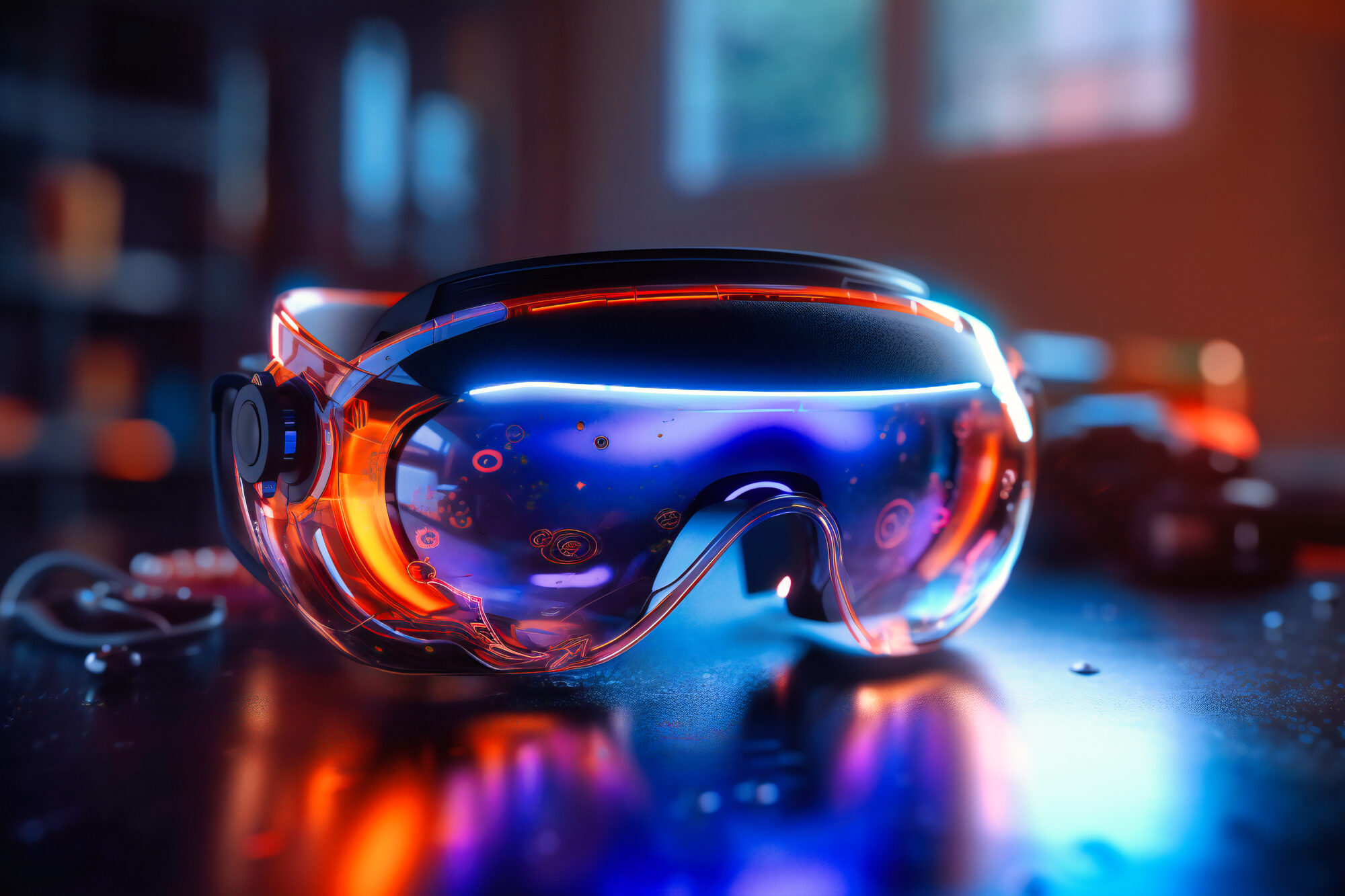Augmented reality has been a topic of growing interest, especially in the past decade, due to its expansive applications across various industries. It has become a tool for enhancing natural environments and situations, offering interactive experiences utilizing real-world settings.
The significance of AR in today’s technological landscape is irrefutable. Its applications range from gaming and entertainment to more practical uses in education, healthcare, and industrial settings. By seamlessly integrating digital elements into the real world, AR provides enhanced experiences, offering interactive and easily manipulatable environments for users. It transforms the way we interact with the real world and amplifies our perceptions and experiences.
The dawn of augmented reality
Tracing back to the roots, the origins of augmented reality can be attributed to concepts that preceded the technology we are familiar with today. While the term “augmented reality” hadn’t been coined yet, the seeds were sown in the mid-20th century. The first semblance of AR technology was Morton Heilig’s Sensorama, created in the 1950s. It wasn’t AR in the modern sense but was an interactive theatre experience that appealed to all five senses, immersing the audience in a multi-sensory environment.
Morton Heilig was not just content with Sensorama; he went on to invent the first head-mounted display (HMD) in 1960, called the Telesphere Mask. This device didn’t have computer or electronic integration but offered stereoscopic 3D images, wide vision, and stereo sound. It was an early indication of the potential for technology that could augment the user’s sensory perception of reality. These initial inventions laid the groundwork for what would evolve into today’s augmented reality.
In the journey of uncovering who invented augmented reality as we know it today, the name Ivan Sutherland holds paramount significance. In 1968, Sutherland, along with his student Bob Sproull, created what is often referred to as the first AR/VR headset, known as the Sword of Damocles. This device was a head-mounted display system that presented simple wireframe drawings, overlaid on the real physical world. The name ‘Sword of Damocles’ was inspired by the intimidating appearance of the device, suspended from the ceiling and somewhat intrusive.
The creation of the Sword of Damocles marked a pivotal moment in the evolution of AR. Although rudimentary by today’s standards, it represented the first instance of a computer-generated overlay being used in harmony with the real world. It was capable of showing simple wireframe images and was notably the first device to combine the virtual and the physical space, marking the inception of both virtual reality and augmented reality.
Augmented reality in the late 20th century
The 1990s heralded an era where the foundational concepts of augmented reality began to take a more definitive shape. It was during this period that the term “augmented reality” was officially coined by Boeing researcher Tom Caudell. Caudell used the term to describe a digital display system he was developing to assist in the assembly of wiring harnesses. This era marked significant advancements in computer technology, leading to the proliferation of AR research and development.
In the realm of gaming and entertainment, AR made significant strides. One notable instance is the AR system developed at Columbia University called the KARMA (Knowledge-based Augmented Reality for Maintenance Assistance). Introduced in 1992, KARMA used see-through, head-mounted display to guide users in maintenance and repair tasks, overlaying textual instructions and diagrams directly onto the machinery being serviced, marking an early practical application of AR.
With the rise of more powerful computers, AR’s evolution accelerated. The technology’s ability to overlay computer-generated images onto the real world in real-time became more robust. By the late 1990s, AR had started to migrate out of the realm of research labs and into practical real-world applications. Its potential for enhancing user interaction with both the physical and digital worlds began to be recognized, leading to innovations that would shape the 21st-century landscape of augmented reality.
Researchers and developers continued to experiment and innovate, leading to the establishment of the first AR systems that integrated software predictive tracking and collaborative multi-user environments. The groundwork laid during this period paved the way for the subsequent boom in AR technology during the 21st century, as it began to find applications in diverse fields ranging from medicine to entertainment and beyond.
The 21st century boom
In times of common smartphones and mobile computing, augmented reality found a new playground to evolve and expand. The integration of AR with mobile devices opened new horizons for user interaction and application development. The 21st century marked the era where AR became accessible to the average person, transitioning from a niche technology confined to labs to a commonplace tool for enhancing digital interactions.
AR’s timeline in the 2000s is marked by significant advancements and milestones. In 2008, the first mobile app that used AR was launched – Wikitude. Wikitude allowed users to see information about their surroundings overlaid onto the screen of their mobile phones, by simply pointing their device at a location. This application marked the beginning of AR’s integration into everyday consumer technology, unlocking a myriad of possibilities for interactive and enhanced user experiences.
Notable AR applications continued to emerge, each marking a significant point on the AR timeline. In 2016, the launch of Pokémon GO became a cultural phenomenon. The game utilized AR to overlay virtual creatures onto the real world, visible through the player’s smartphone screen. Pokémon GO not only became a massive hit globally but also introduced millions of people to the concept of augmented reality, bringing AR into mainstream awareness.
Each innovation and application in this era underscored AR’s transformative potential. From enhancing user experiences in gaming to offering practical solutions in fields like navigation, education, and retail, AR began to showcase its versatility. The technology, once a speculative concept, was now a tangible and integral part of the digital landscape, promising a future where the integration of virtual and physical realities would become seamless and ubiquitous.

presentation to try
Nsflow in action
Modern-day applications
Today, augmented reality is a ubiquitous element of our digital landscape, finding diverse applications across various fields. It’s not just confined to gaming or entertainment; industries like healthcare, education, retail, and automotive are leveraging AR to enhance user experiences, improve outcomes, and optimize processes. The technology has matured significantly, driven by advancements in AI, machine learning, and computer vision, leading to more intuitive, interactive, and immersive AR applications.
In healthcare, AR is being used for advanced surgical visualization, patient education, and training for medical professionals. Tools like Microsoft’s HoloLens have found applications in surgical planning and navigation, offering doctors a detailed, interactive, 3D visualizations of the patient’s anatomy overlaid in real-time during procedures. This augmented view provides surgeons with crucial insights, enhancing precision and outcomes. Medical education is also being transformed, with AR providing interactive and immersive learning experiences, facilitating a deeper understanding of complex medical concepts.
Retail and e-commerce sectors have also embraced AR for enhancing customer experiences. Applications that allow users to virtually “try on” clothes, accessories, or cosmetics using their smartphone’s camera are becoming commonplace. IKEA’s AR app, for instance, enables customers to visualize furniture in their own homes before making a purchase. These applications not only enhance customer engagement but also contribute to informed purchasing decisions, reducing returns and increasing customer satisfaction.
In education, augmented reality is transforming traditional learning paradigms. Interactive AR applications are making learning more engaging, visual, and hands-on. Whether it’s visualizing complex scientific concepts, exploring historical events, or learning languages, AR brings subjects to life, fostering a deeper understanding and retention. The technology is also facilitating remote learning, offering students immersive and interactive experiences beyond the confines of traditional classroom settings.
The role of AI and machine learning in AR’s evolution
Artificial Intelligence (AI) and machine learning boost the capabilities of augmented reality. These technologies enable AR applications to recognize patterns, process vast amounts of data in real-time, and render highly interactive and contextually relevant digital overlays. The synergy between AI, machine learning, and AR is leading to more intuitive, responsive, and personalized user experiences, marking a significant milestone in the AR timeline.
AI-powered object recognition and computer vision technologies have been fundamental in enabling AR applications to accurately overlay digital information onto the real world. For instance, in social media filters and effects, AI algorithms identify facial features and movements to overlay digital elements accurately, creating interactive and engaging user experiences. In retail, AI-powered AR apps can recognize products and provide users with real-time information, reviews, and purchasing options, enhancing the in-store shopping experience.
The integration of AI and machine learning with AR is not just enhancing user experiences but is also opening new frontiers in data analytics and insights. Businesses can leverage AI-powered AR applications to gather real-time data on user interactions, preferences, and behaviors. These insights are invaluable for informing business strategies, product developments, and marketing campaigns, making AR a powerful tool for business intelligence and analytics.
Future prospects and challenges
As we project into the future of augmented reality, several trends and challenges emerge. The technology is on a trajectory of rapid evolution, with advancements like 5G, AI, and the Internet of Things (IoT) powering its growth. We are heading towards a future where AR will be an integral part of our daily lives, offering enhanced, interactive, and personalized experiences across various aspects of our personal and professional lives.
Yet, with these promising prospects, challenges persist. Issues related to privacy, data security, and ethical considerations are at the forefront. As AR collects and processes vast amounts of data to deliver personalized experiences, questions about data handling, consent, and security arise. Balancing the innovative strides with ethical, legal, and privacy considerations will be paramount to ensure that the technology is developed and utilized responsibly and sustainably.
Technological challenges also persist. Enhancing the realism, interactivity, and contextual relevance of AR experiences requires ongoing innovations in computing power, AI, and graphics rendering. The development of wearable AR devices that are ergonomic, aesthetically pleasing, and capable of rendering high-quality AR experiences is another frontier of innovation. Overcoming these technical challenges is crucial for AR to realize its full potential and permeate mainstream adoption.
The future of augmented reality is teeming with possibilities, yet intricately tied to our ability to navigate the associated challenges. It is a journey of discovery, innovation, and adaptation. As we continue to explore and push the boundaries of what is possible with AR, we are not just evolving the technology, but also our interaction with the world around us, marking the dawn of an era where digital and physical realities are inextricably linked, offering unprecedented opportunities for innovation, growth, and human advancement.
Final thoughts
As we reflect on the journey of augmented reality, from its conceptual origins to its modern applications and future possibilities, it’s evident that AR is more than just a technological innovation. It’s a medium that bridges the digital and physical worlds, offering unprecedented opportunities for interaction, communication, and experience. Each stage of AR’s evolution builds upon the last, driven by a synergy of technological advancements, creative applications, and societal adaptation.
The history of AR is a testament to humanity’s innate drive to overcome the boundaries of our sensory and experiential limits. As we step into the future, the ongoing evolution of AR promises not just enhanced ways of perceiving and interacting with the world but also the unfolding of new dimensions of human experience, marked by increased interconnectivity, immersion, and augmentation.


























